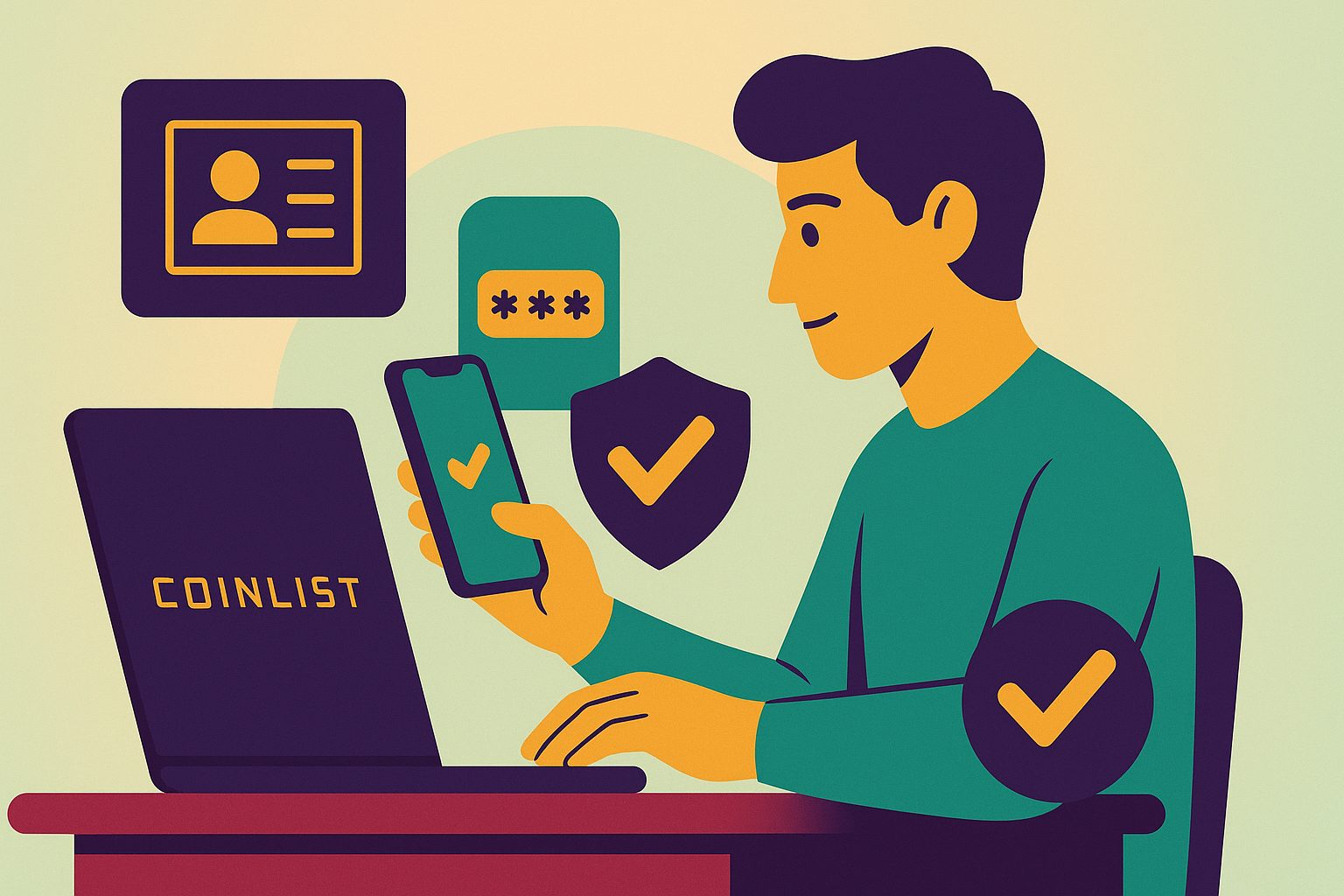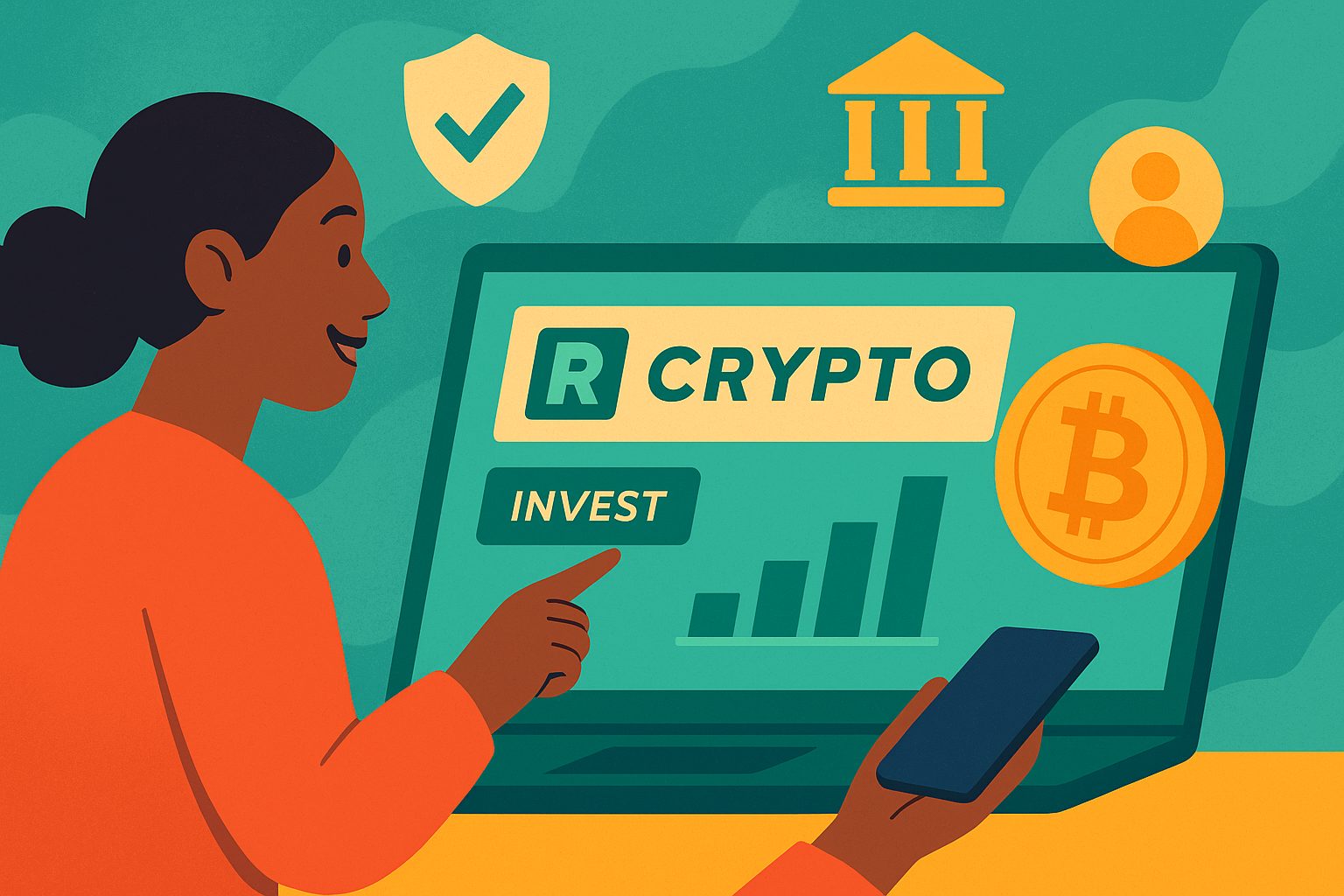Entering the CoinList Ecosystem with Confidence
Navigating the world of crypto investing begins with choosing a platform that combines opportunity with safety. CoinList stands out by offering vetted token sales, regulated offerings, and fiat-to-crypto rails, yet its real power lies in the security measures woven into every step of user onboarding. Whether you’re a first-time crypto investor or a seasoned blockchain enthusiast, understanding how to register and verify your identity on CoinList is your first line of defense against fraud, phishing, and account compromise. In this guide, you’ll discover practical strategies, platform insights, and expert tips to ensure your CoinList account is established on a foundation of rock-solid security.
Why Secure Onboarding Matters
Before you even type your email address, it’s vital to recognize that an exchange is only as strong as its weakest user link. Research shows that many high-profile breaches stem from stolen credentials or lax verification procedures. CoinList’s registration and verification workflow doesn’t exist as a mere formality—it’s a carefully engineered process designed to authenticate real individuals, deter bad actors, and comply with global regulations. By committing to security best practices during onboarding, you protect not only your own funds but also the integrity of the wider community. Embrace the verification steps with the understanding that each additional safeguard translates into reduced risk and enhanced peace of mind.
Choosing a Strong, Unique Password
Your first line of defense begins with a robust password. Avoid recycled credentials from other sites—password managers make it simple to generate long, randomized strings that thwart brute-force attacks. Aim for at least twelve characters combining uppercase and lowercase letters, numbers, and symbols. Resist the temptation to use personal information such as birthdays or pet names, which can be reverse-engineered from social media. Once you set your password, store it securely in an encrypted vault and commit it to memory rather than writing it on sticky notes. A strong, unique password ensures that even if another online service is compromised, your CoinList account remains protected.
Enabling Two-Factor Authentication (2FA) Immediately
After establishing your password, CoinList prompts you to activate two-factor authentication—an essential extra layer of defense. Rather than relying on SMS codes, which can be intercepted via SIM swapping, opt for an authenticator app such as Google Authenticator or Authy. These apps generate time-based one-time passwords (TOTPs) that change every 30 seconds, making it virtually impossible for attackers to gain access without physical control of your device. Once 2FA is in place, any login attempt must be accompanied by a valid TOTP, effectively nullifying credential-only breaches. Treat your 2FA backup keys with the same care as your seed phrases: store them offline in a secure location where only you can retrieve them.
Registering Your Account: Step-by-Step
With your credentials and 2FA ready, head to CoinList’s registration page and enter a valid email address. You’ll receive a confirmation link—clicking it verifies your control of that inbox. Next, you’ll fill in basic personal details such as your name, date of birth, and country of residence. Accuracy here matters: mismatches later during identity verification can lead to delays or even application rejections. Review each field before submission, ensuring that spellings match your government-issued ID exactly. Once you hit “Create Account,” your email and password get secured behind CoinList’s strong encryption standards, and you’re one step closer to full platform access.
Preparing for Identity Verification: What You’ll Need
CoinList’s identity verification process, often referred to as KYC (Know Your Customer) and AML (Anti-Money Laundering) checks, requires you to upload official documentation. Commonly accepted documents include a valid passport, driver’s license, or national ID card. Make sure your ID is unexpired, in good condition, and features a clear photograph. You’ll also need proof of address—this can be a recent utility bill, bank statement, or government correspondence that clearly displays your name and address. These documents must be dated within the last three months. Gathering high-resolution, well-lit scans or photographs in advance speeds up the process and reduces the risk of image-quality rejections.
Uploading Documents Securely
When you’re ready to verify, navigate to the verification section of your CoinList dashboard. Upload your ID and proof of address as instructed, taking care to mask any irrelevant personal details (such as your social security number) if privacy laws permit. Use a secure home or office network to transmit your scans; avoid public Wi-Fi that attackers could be monitoring. CoinList’s system encrypts your documents in transit and at rest, but you can add an extra layer of protection by uploading through a trusted VPN. After submission, expect an automated preliminary check followed by manual review by compliance specialists. That combined approach weeds out fraudulent attempts while adhering to legal requirements.
Completing the Facial Verification Step
In addition to document uploads, CoinList leverages facial recognition checks to confirm that the person behind the ID is the same individual accessing the account. You’ll be prompted to take a selfie or record a short video, following on-screen instructions to look in various directions. For best results, ensure even lighting and remove hats or sunglasses. The system matches your facial features against the ID’s photo, flagging any inconsistencies for human review. Successful facial verification locks in your identity, unlocking higher deposit limits and full participation in token sales and equity deals. If the automated check fails, you may receive an email guiding you through a supervised video call with a compliance officer.
Understanding Verification Tiers and Limits
CoinList employs tiered verification levels, each unlocking additional functionality. The initial tier, often called “Basic,” allows you to deposit small amounts of crypto and explore open-access token sales. Completing full KYC elevates you to “Verified,” enabling larger fiat deposits, participation in equity raises, and access to exclusive early-stage offerings. Some professional or institutional tiers require supplementary documentation—such as corporate registration papers for business accounts or proof of accreditation for high-net-worth investors. Familiarize yourself with these thresholds to plan which verifications you’ll pursue, aligning your documentation efforts with your investment ambitions.
Troubleshooting Common Verification Hurdles
Even meticulous preparation can’t eliminate every hiccup. Common issues include blurry document scans, mismatched names, or insufficient proof-of-residence formatting. If your verification is declined, CoinList’s compliance team provides generic feedback and may request re-submission of specific documents. Respond promptly, ensuring that new uploads address the cited deficiencies—perhaps by increasing resolution, switching to a different document type, or capturing images from daylight rather than under harsh artificial lighting. For complex cases, such as name changes or dual citizenship, prepare supplementary evidence like marriage certificates or secondary passports. Clear communication with support staff expedites resolution and prevents repeated delays.
Safeguarding Your Login Credentials Long-Term
Once verified, your login credentials become even more valuable. To maintain account integrity, periodically audit your authorized sessions on CoinList—revoking any you don’t recognize. Avoid storing passwords or 2FA backups on cloud-connected devices. If you ever suspect your credentials are compromised—perhaps after a data breach on another platform—immediately reset your CoinList password and reconfigure 2FA. Use passphrase-style passwords rather than single words, rotating them at intervals recommended by cybersecurity guidelines. By treating your CoinList credentials as a critical digital asset, you preserve access to high-value token sales and protect your investments.
Recognizing and Avoiding Phishing Attempts
Attackers often mimic the look and feel of CoinList’s website in phishing emails or fake login pages designed to steal credentials. Always verify the URL in your browser’s address bar, ensuring it begins with “https://coinlist.co” and displays the secure padlock icon. Beware of unsolicited messages asking you to click links or download attachments; CoinList’s support team will never request your full password or 2FA codes via email. If you receive a suspicious message, report it to CoinList’s security team immediately. For extra peace of mind, consider installing a browser extension that flags known phishing domains, preventing accidental navigation to fraudulent sites.
Reaching Out to Support When You Need Help
Even security-minded users may encounter rare technical glitches or require clarifications. CoinList provides a dedicated support portal where you can submit tickets, track resolution progress, and access a growing knowledge base. When drafting your support request, include clear details—such as screenshots (with sensitive information redacted), timestamps, and specific error messages—to speed up diagnosis. Avoid seeking instant solutions on public chat rooms, where scammers may impersonate support agents. Instead, rely on official CoinList channels and community forums monitored by the platform’s moderation team. Prompt, well-documented interactions with support not only resolve your issues faster but also contribute to improved onboarding workflows for everyone.
Staying Compliant as Regulations Evolve
Cryptocurrency regulations remain in flux across jurisdictions, influencing KYC requirements and permissible transaction types. CoinList continuously updates its verification criteria to align with new laws—ranging from enhanced due diligence for politically exposed persons (PEPs) to anti-terrorism financing mandates. Stay informed by subscribing to CoinList’s compliance newsletter or following official announcements in your dashboard alerts. If you relocate or update your citizenship status, proactively notify CoinList and submit any new documentation to maintain uninterrupted access. By treating regulatory compliance as an ongoing responsibility rather than a one-time hurdle, you ensure your account remains in good standing and avoid sudden lockouts.
Your Secure Onboarding Journey
Completing the CoinList registration and verification process can feel like a multi-step marathon, but each phase—from forging a bulletproof password to passing facial recognition checks—serves a critical purpose: fortifying your account against threats and unlocking powerful investment opportunities. By approaching onboarding with patience, attention to detail, and a commitment to security best practices, you lay the groundwork for years of smooth sailing in the ever-evolving crypto landscape. Now that you’ve mastered account setup and identity verification, you’re ready to explore CoinList’s curated token sales, equity offerings, and DeFi integrations with the confidence that your digital identity is rock-solid. Welcome to a safer, smarter way to invest in the decentralized future.




